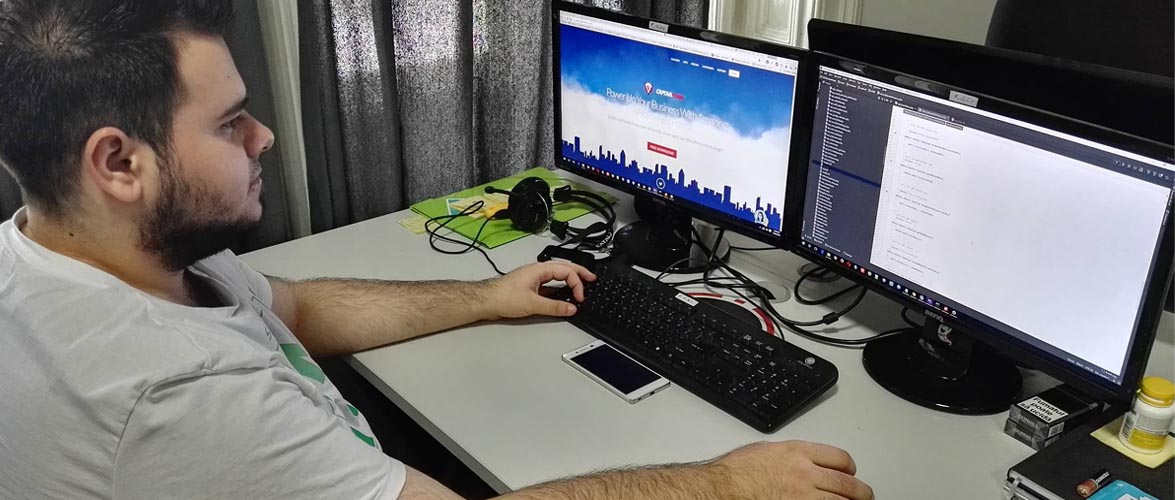Differences Between a Web Developer & Web Designer
If you're looking to learn the skills, you'll need to start a new career in technology, you'll almost certainly come across references to two key roles: web designers and web developers.
So what exactly is the distinction between a web designer and a web developer? Don't worry if seeing these two job titles mentioned side by side with no explanation leaves you confused.
What is a Web Developer?
Web developers (also known as front end developers) are computer programmers who use coding languages to transform web designers' plans and layouts into live, working websites.
What is a Web Designer?
Web designers are digital creatives who create a website's overall vision and strategy. Web design is all about determining a site's layout, font set, colour palette, and visual themes, which are brought to life using code. That’s the work of web developer.
In the digital world, web designers are just one type of designer. Web designers, graphic designers, UX designers, and others fall under the category of visual designer.
What Does a Web Designer & Web Developer Do?
While a web developer can dabble in web design and vice versa, each job requires specific skills and performs its own functions. We'll go over the skillsets for each job in more detail below, but in general: web developers are important to construction companies, web designers are important to architects. One imagines how a website should appear and creates a visual plan (similar to an architect's blueprint), while the other constructs the website using that plan.
What Does a Web Developer Do?
While a web designer's skill set is heavily focused on design, a web developer's skill set is more focused on traditional computer programming. The following are some of the most important web development skills:
1. HTML/CSS
HTML and CSS are two computer languages that you should learn right away if you want to work in web development.
- HTML (Hypertext Mark-up Language) is a programming language that is used to define the components of individual web pages. HTML tells web browsers which part of the page is the header, which part is the footer, where paragraphs go, and where images, graphics, and videos go so that everything looks good on the user's phone, tablet, or computer screen.
- CSS (Cascading Style Sheets) is HTML's sister language. CSS is used to STYLE those formatted pages while HTML controls page layouts. The fonts, background colours, and paragraph formatting on a page are all defined by CSS.
These two languages are sufficient to begin coding basic, static websites, which can lead to your first paid development job. And, as an added bonus, both languages can be learned in a matter of weeks with courses like our Front-End Developer Course.
2. JavaScript
If HTML and CSS are the most important web development skills to learn, JavaScript (JS) is a close second. JavaScript is a scripting language that allows you to add and control dynamic content on your website. Photo slideshows, videos, animated graphics, and interactive forms are all examples of this.
Serious web development starts with the addition of JavaScript knowledge to HTML and CSS. With these three skills, you'll be able to build feature-rich, interactive websites as a working web developer. And, while not as quick to learn as HTML/CSS, JavaScript can be picked up in months, not years.
3. jQuery/JavaScript FRAMEWORKS
"What's the difference between JavaScript and jQuery?" is a question that our students frequently ask. JavaScript is a powerful tool for web developers on its own, but it becomes even more powerful when combined with JavaScript libraries like jQuery or JavaScript frameworks like React.JS.
JavaScript libraries (of which jQuery is the most popular) are collections of pre-written JavaScript code that can be plugged into web projects to save developers time re-creating basic JS functions such as interactive forms and image galleries. jQuery allows you to tap into the hive mind to find reusable template code instead of having to code from scratch every time you need some common JavaScript features in a web project.
There are also frameworks. React.js, for example, is a JavaScript framework that consists of a collection of JavaScript libraries that can be used as larger-scale templates for web projects. JS frameworks provide not only pre-written code (such as jQuery), but also a structure for where your JavaScript code should be placed, making projects more efficient and uniformly organised.
4. WordPress
In addition to HTML, CSS, and JavaScript, web developers can use Content Management Systems (CMS) to create websites. With 59.3 percent of the market share, WordPress is the industry standard CMS, beating out competitors like Drupal (3.7 percent) and Squarespace (2.5 percent).
When you build a site with WordPress, you can use WordPress' on-screen menu and interface to create and add content—no coding required.
This means that even if you don't know how to code, you can create a WordPress site using premade WordPress themes and templates. You can create your own themes and modify existing ones using languages like HTML and CSS, turning WordPress into a powerful tool for website customization.
While coding sites from scratch gives you the most web development, it also limits your web development options.
WordPress sites are a popular choice for clients who don't require a custom-built site or who want to be able to update content on their own in the future.

